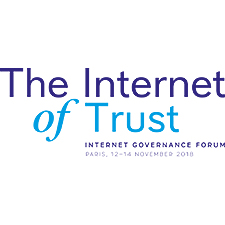1.3 billion reasons for making technology accessible
13 Nov 2018 10:15h - 11:45h
Event report
[Read more session reports and live updates from the 13th Internet Governance Forum]
The objective of the workshop, which focused on accessibility for persons with disabilities, was to get input from international experts and from participants on accessibility for persons with disabilities in order to move forward to achieve an inclusive society, updating some of the issues discussed at previous Dynamic Coalition on Accessibility and Disability (DCAD) workshops at past Internet Governance Forum (IGF) annual meetings.
Mr Gerry Ellis, Accessibility and Usability Consultant for Feel the BenefIT, introduced the session with a quick background on why it is is important to discuss the accessibility of technology for the 1.3 billion persons living with a disability in the world today. He especially highlighted the fact that they control USD$8 trillion worth of disposable income, and they are not alone, but are emotionally and financially attached to family, friends and relations who live with them. The question he posed, which this workshop aimed to answer, is why technology should be made accessible to persons with a disability, and why standards should be developed.
Ms Gunela Astbrink, ISOC Australia, mentioned the issue of interoperability of assistive technology devices as one thing that ought to be looked at. This is because most of the technologies are proprietary in nature and are designed to operate only with a particular vendor. Dealing with this issue will provide more independence for persons with disabilities. She mentioned the issue of privacy which affects people with disabilities, mostly with the advent of Information Retrieval Technologies (IRT), and advocated that the security of such technologies should be looked at.
Mr Shadi Abou-Zahra, World Wide Web Consortium (W3C), mentioned that the W3C looks at accessibility in a much broader form. In his view, by looking at accessibility, you may be covering 15% to 20% of the world’s population. This according to him is backed by a research done Microsoft in 2003 when they commissioned Forrester Research to look at why they need to increase accessibility for the Windows operating system. They came to the conclusion that 15% to 20% of of the American workforce (it was a study local to the United States) requires accessibility features in order to be able to use a computer, but that nearly two thirds of the population actually benefit from the accessibility features. These are things such as captioning, being able to increase the font size, being able to scan the headings or use text-to-speech to interact with the computer. He observed that not only persons with a disability, but the rest of the population as well, benefits from features that will help them.
Abou-Zahra highlighted the importance of the web content accessibility guidelines (WCAG). WCAG is a standard for web content accessibility developed by W3C. It provides a broad definition for web content. All things on the web (video, audio, forms, texts, images) are increasingly accessed using mobile apps. He also mentioned that W3C provides a lot of educational resources on how to apply these standards in practice. According to the W3C, the issue of accessibility is not only about providing the standards, but also about addressing the lack of knowledge and skills amongst many of the designers and the developers.
Mr Muhammad Shabbir, International ICT Consultant and member of ISOC, Pakistan, highlighted issues of accessibility in Pakistan and the efforts by the government to come up with policies that will ensure that organisations comply to ensure that services can be made accessible to persons with disability. He gave the example that by a policy that came into effect in 2014, banks are supposed to ensure that their electronics services including ATMs are accessible for persons with disabilities.
Mr Derrick Cogburn, Executive-Director, Institute on Disability and Public Policy (IDPP),made a presentation looking at the 12 years of the IGF, accessibility, and how it has been seen or treated among all other IGF topics. Accessibility was mostly seen as a human right; however no work has been done on the independence principle on accessibility, particularly as contained in the Paris Principles.
Mr Anthony Giannoumis, Assistant Professor of Universal Design of Information and Communication Technology at Oslo Metropolitan University (OsloMet), spoke about how Norway is using information and communications technology (ICT) to promote lifelong learning, which in his view, is basically learning in the purest form. It is self-directed, voluntary, and ongoing throughout a person’s life course. Norway views ageing as part of the disability process and everybody is affected. Mechanisms in ICT that promote accessibility are therefore championed. As an example, subtitles in video lessons help not only viewing and listening but reading to ensure better learning.
Questions from participants were taken and the speakers took turns to address them.
By Jacob Odame- Baiden
Related topics
Related event

